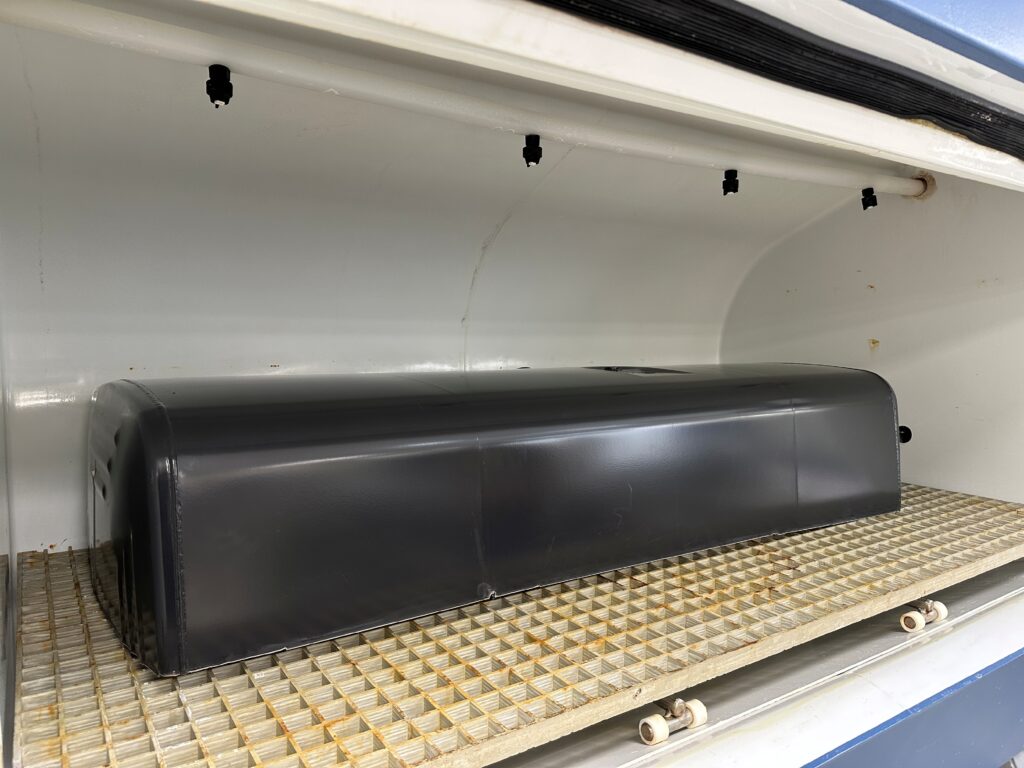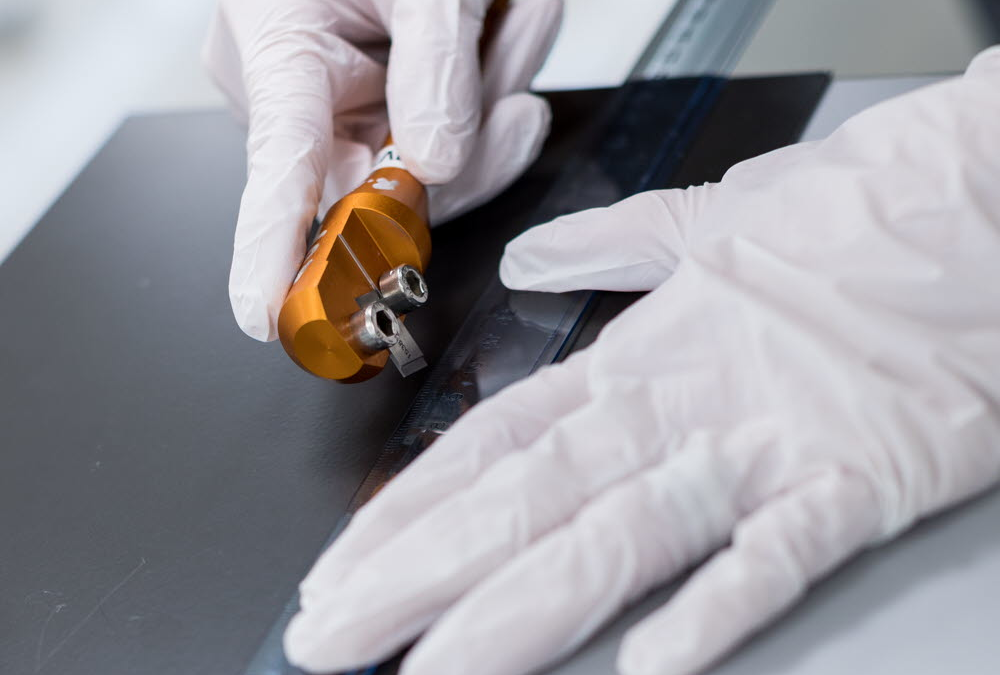Test on coatings and paints maintenance plan
What test on coatings and paints are useful in drawing up a maintenance plan?
How to schedule the time for the first intervention?
As suggested by ISO 12944-1, the first maintenance work on coatings is normally necessary when about 10% of the surface of the component reaches a degree of rust grade equal to Ri 3 as defined by ISO 4628-3.
The assessment of the degree of rust provides a technical parameter that can be used to define the durability of the paintwork, i.e. the time interval within the first maintenance intervention must be performed.
Caution: this time interval should not be confused with the so-called “warranty durability”.
The durability of coatings and paints is defined according to the following classes:
L (Low): maintenance within 7 years
M (Medium): from 7 to 15 years
H (High): from 15 to 25 years
VH (Very High): beyond 25 years.
Atmospheric corrosion resistance of coatings and paints
Steel structures exposed to the atmosphere are protected with coatings and paints to prevent a very thin liquid film from forming on the metal surface, a factor that triggers the corrosion process.
In fact, corrosion occurs only if water is present on the surface, and its progress depends on the time the surface remains wet (wetting time – τ).
In addition to relative humidity and temperature, there are several factors that determine the extent of corrosion, including the presence of contaminants (SO2, NOx, HCl, NaCl, solid particles) that can be deposited on the surface in the form of dry species or “liquid” species, promoting wetting and exerting an aggressive action.
The acidity of the environment plays a significant role as well: carbon dioxide in the atmosphere tends to dissolve in water and lower its pH to a value of 5.5. Additional chemical species such as SO2 and NOx (polluted industrial areas) further reduce the pH to 4.5 or even 4.
ISO 12944 series standards provide instructions for ensuring effective corrosion protection of painted steel structures. Let’s review the highlights.
Classification of atmospheric corrosivity according to ISO 12944-2
Although it is not possible to reproduce perfectly in the laboratory the actual conditions in which coatings and paints operate, ISO 12944-2 standard gives a classification of atmospheric environments in order to provide a practice to be used in coating system selection.
The list of environments given below for each class should therefore be understood as illustrative and not limiting.
- C1 very low corrosivity: heated buildings with clean atmospheres (offices, stores, hotels).
- C2 low corrosivity: low pollution (rural areas), unheated buildings (condensation).
- C3 medium corrosivity: urban and industrial areas with moderate pollution, coastal areas with low salinity, manufacturing environments with high humidity and moderate air pollution.
- C4 high corrosivity: industrial and coastal areas with moderate salinity, chemical plants, swimming pools, coastal shipyards.
- C5 corrosivity very high: industrial areas with high humidity and aggressive atmosphere, coastal areas with high salinity and buildings or areas with almost permanent condensation and high pollution.
- CX extreme corrosivity: offshore (high salinity), industrial areas with extreme humidity, aggressive, tropical or sub-tropical atmospheres, industrial areas with extreme humidity levels and aggressive atmospheres.
Coating and paint cycle evaluation tests according to ISO 12944-6
ISO 12944-6 standard provides guidance for choosing the most suitable test on coatings and paints to assess their corrosion resistance according to the corrosivity classes defined above.
The following table relates precisely the corrosivity class with the most suitable test method depending on whether the coatings and paints are intended to operate in an environment characterized by the presence of salt (salt spray according to ISO 9227) or exempt (continuous condensation resistance according to ISO 6270-1).
|
Corrosivity category (ISO 12944-2) |
Durability (ISO 12944-1) |
Condensation (hours) (ISO 6270-1) |
Salt spray (hours) (ISO 9227) |
| C2 | Low | 48 | – |
| Medium | 48 | – | |
| High | 120 | – | |
| Very High | 240 | 480 | |
| C3 | Low | 48 | 120 |
| Medium | 120 | 240 | |
| High | 240 | 480 | |
| Very High | 480 | 720 | |
| C4 | Low | 120 | 240 |
| Medium | 240 | 480 | |
| High | 480 | 720 | |
| Very High | 720 | 1440 | |
| C5 | Low | 240 | 480 |
| Medium | 480 | 720 | |
| High | 720 | 1440 | |
| Very High | – | – |
In order to determine a coating’s compliance with Class C5 Very High, constant testing is not sufficient and therefore a cyclic corrosion test must be applied.
Following the salt spray tests and other environmental tests described above, coatings are inspected to assess their degradation, integrity, adhesion, hardness and stone resistance, measure their thickness, or perform other functional tests.
 Truck tank (1750x650x550 mm) made of painted steel inside a salt spray chamber.
Truck tank (1750x650x550 mm) made of painted steel inside a salt spray chamber.
Test for assessing the extreme corrosivity category CX
Coatings and protective paints used in offshore structures or in parts permanently exposed to the marine atmosphere, immersed in brackish water, or in the tidal zone are addressed by ISO 12944-9, which requires qualification of the coating by cyclic corrosion test or by immersion test according to ISO 2812-2.
What tests on coatings and paints can we perform?
The complete list of tests on coatings and paints that we make available to the customers includes more than 200 corrosion test methods in accordance with the main international standards.
Search our freely accessible catologue online, by typing the standard number or any other keywords.
Are you not finding a suitable test matching your needs?
Contact us by phone: +39 351 723 9441 or e-mail: material@materialscan.it.
At no additional cost, we provide assistance in selecting the correct test method based on both international standards and OEM requirements in the automotive industry
